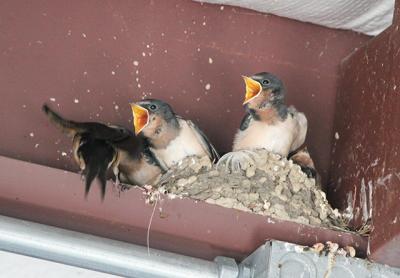Nature Notes: Changes, Changes, Changes

Eutropia in ecology is akin to functional Utopia in mankind’s world. There are levels of position and function, just as in modern society. Up-and-down-ness is based on food habits, sheltering niches, pecking order (without the pecking), growth and maturation, longevity, intelligence, learning, ritualism, compensation for acts of God, short-term success and long-term improvement, and generational transfer. The major difference, of course, is that ecology is based on an interacting group of millions and millions of different species, while mankind is composed of just one.
The two super groups interact with each other, more in terrestrial habitats than in aquatic ones, and those interactions define the ultimate direction and outcomes of them both. Which kingdom is changing the most rapidly, advancing or regressing, is a matter yet to be determined. For example, humans injure and kill each other to a far greater degree than members of the natural world, but on the other hand, humans have very much more complicated systems of management and with an almost infinite assortment of different tools of manufacture, we build and repair things of all kinds in order to pursue myriad self-maintenance activities. Only a few infra-humans use tools, and all infra-humans lead relatively simple lives.
Human life has become complicated to the point where people across the face of the globe now interact with one another, personally or electronically, on several different levels in a kind of expanding pluralism of activities and organizations, while almost all of the other members of the animal kingdom stick close to one type of habitat area. For example, cacti live in deserts, plains animals live on prairies, squirrels live in areas with trees, and so on.
Evolution on Earth has been going on for more than four billion years, since the first living thing came into existence and was able to reproduce itself ad infinitum. And while there have only been a few species that are considered humans, those in the genus Homo, there have been, perhaps, at least a billion plants, animals, fungi, bacteria, and other groups over that span — 99 more kinds than exist today, as evolutionists and paleontologists are wont to say.
One measure of a living species’ success over time is its longevity. For example, the coelacanth, now represented by two very rare species, has not changed much in 400 million years, and horseshoe crabs or their near lookalikes have been around for at least 300 million years. On the other hand humans have been here for less than half a million years. Today, we try very hard to keep the horseshoe crabs and the coelacanths from becoming extinct, but such conservation efforts have only been applied in the last 50 years or so. Before that, the two different forms made it to modern times on their own.
Just as human society is changing from generation to generation — as in the evolution of modern dance music from spiritual to ragtime to Dixieland to swing to modern jazz to various forms of rock ’n’ roll to rap — human culture in general is changing just as quickly. But all of the other species, with few exceptions, are getting by in much the same way they did thousands of years ago. One might say they lead a very boring existence compared to the modern post-industrial human.
But then there is the old adage: If it works why change it? The Amish still till their fields with horse-drawn plows, not gasoline-powered tractors. Various Native American groups still catch fish and other food items the old-fashioned way. Even some almost ultra-modern humans gather mushrooms, leeks, clams, and other food items when they are not busy being ultra-modern. Schools for educating children have been around for a thousand years of more. At first they were simply teaching basic survival skills; now schoolchildren use computers and build robots in addition to learning the three-Rs and their more advanced forms, such as algorithms and the like.
The very successful red-breasted robin, a member of the thrush family, is distributed throughout the whole of North America. Generation upon generation over the millenniums, it has changed its way of extending itself very slightly if at all. Other species fell by the wayside for one reason or another, mostly because of very large episodic happenings like comet and large meteorite collisions, extreme changes in temperature from very, very hot, to the very, very cold that created the glaciers that covered most of Eurasia and North America from time to time.
But just as there are new religious sects, new entertainment venues, new sports, new fashions, new ways of living, new modes of transportation, and an ever-growing fascination with the cosmos and inhabiting it, there are new ecological types forming, known as novel ecosystems. These have come about mainly as a result of human ecosystem changes, those that brought species from one area of the world to a new one. The examples are never-ending: jumping carp from Asia, gypsy moths from Europe, a host of invasive plants brought to North America for one reason or another by immigrants, travelers, traders, and smugglers, not to mention federal and state agencies. Among them are phragmites, Asiatic bittersweet, Japanese honeysuckle, red oak wilt, Asian longhorn beetles, pythons, European starlings, kudzu, snakehead fish, and thousands of others that have upended traditional American ecosystems.
Even without the massive interventions of man by wars, various mining operations and mass clearings of tropical forests and woodlands for agriculture, the earth’s longstanding ecosystems are changing, the glaciers are melting faster and faster, the oceans are becoming more and more acidic, the human population has increased drastically within the last 150 years, while the numbers of the majority of animal and plant species are decreasing.
It raises the question: How many generations from now will it take for the world to become one big mishmash novel ecological system? Anyone want to hazard a guess?
Larry Penny can be reached via email at [email protected].
